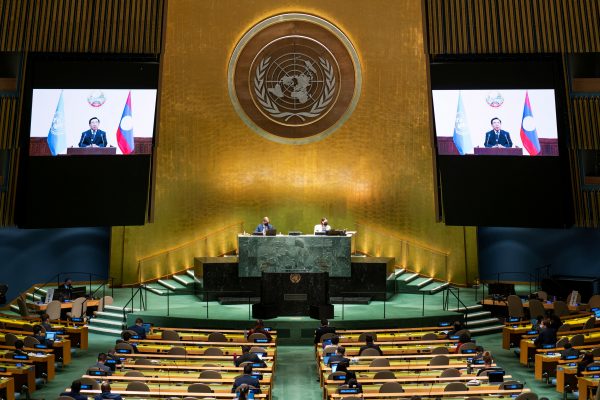The previous administration made the unprecedented decision to revise the growth target of the eighth five-year plan, 2016-2020, down three times from 7.2 per cent to 6.9 per cent, 6.3 per cent and finally 5.5 per cent. The official growth rate in 2020 was 3.3 per cent, although estimates by several international financial institutions were closer to zero per cent.
Laos set its growth target assuming an Incremental Capital Output Ratio of four. This means that investment of about 30 per cent of GDP every year is needed to generate about 7 per cent annual growth. This could be easily achieved by investing in a government-led mega project when GDP was in the low billions in the early 2000s. It became significantly harder to address when GDP grew to US$16 billion in 2016.
The decelerating growth trend is unlikely to be reversed unless new strategies are devised which rely less on mega projects. In the meantime, the government has set the growth target of the ninth five-year plan, 2021-2025, to 4 per cent in response to the downwards trend and the impacts of COVID-19.
Concerns about the Lao government’s inability to service its expanding external debt, particularly related to its multi-billion dollar highspeed railway and domestic hydroelectric powerplants, started to appear around mid-2020. Later reports on the liquidation of the majority of the national power grid confirmed the seriousness of the debt problem. Concern was already widespread, and the new administration has made it clear that the mounting debt pressure is a matter of national urgency.
In his first speech at the national assembly, Viphavanh declared fiscal and economic difficulties a national agenda item. Reducing external debt ratio to GDP to no more than 55.4 per cent by 2023 was among the critical but very ambitious targets set in this national agenda. While some are sceptical about the ability of the new administration to carry out reform, there are reasons to believe that things may be different this time.
Viphavanh declared that he would not wait until the end of his term to see results. The major policy cycle in Laos is traditionally based on a five-year plan. Any cabinet minister can wait until the end of the term to reveal if the major targets were achieved and leave without having to deal with the consequences. Viphavanh has set the time frame for this national agenda to the end of 2023, about two and half years after taking the office.
There have been numerous reforms to government expenditure and revenue raising. Tax revenue for some items increased several folds after the introduction of an online tax payment system. Under this new system, obscurity arising from direct interaction between officers and taxpayers can be prevented.
Viphavanh also announced that no one, including himself, would be allowed to retain their official car after leaving office. This has reduced the number of official cars and will limit the amount spent on the fixed and operating costs of expensive official vehicles. Even under continuing difficulties of Covid-19, the fiscal deficit is projected to slightly shrink to 4.7 per cent in 2021 due to improved revenue collection and lower spending.
The speed of debt accumulation is expected to slow down substantially because of the lower growth target. The government’s growth strategy is to secure the investment needed to achieve the growth target defined at the beginning of each five-year plan. Since the 2000s, about 30 per cent of GDP is usually set as the necessary investment target to achieve 6-7 per cent annual growth. This was manageable in 2005 when the Lao economy was about US$2.5 billion.
In 2015, when Lao GDP was three times larger, this strategy was no longer feasible, especially because viable investment opportunities outside resource sectors are limited. The average growth target for the next five years has been set at 4 per cent, while the investment needed to achieve this is about 19 per cent of GDP, or US$3.6 billion a year.
The national budget, official development assistance and private investment are expected to account for 11 per cent, 18 percent and 49 per cent of the total investment respectively. The lower growth target will reduce the pressure on the government to venture into difficult and risky investments.
There are expected benefits arising from improved connectivity with China since the highspeed railway started operation in December 2021. The emergence of deepened relations with China is an unprecedented economic opportunity for landlocked Laos, historically distant from global markets. But the benefits of increased connectivity are not guaranteed as the national urgency surrounding debt is far from over. There is also the risk that reliance on China may compromise the political independence of Vientiane.
Whether increased connectivity will deliver benefits will depend on how the railway and parallel expressways are operated, managed and utilised. Reducing the debt burden will not happen without the progression of the proposed national agenda. The uphill battle continues, although the prospects are getting a little brighter for now.
Souknilanh Keola is a researcher in the Development Studies Centre at the Institute of Developing Economies, Japan External Trade Organization (IDE-JETRO).

